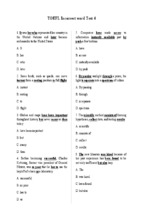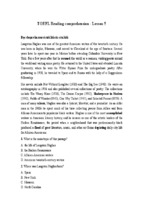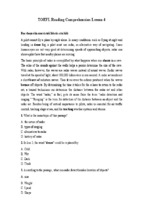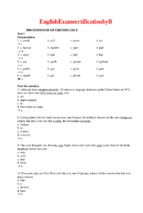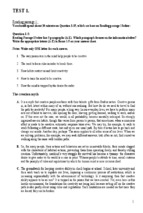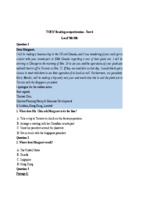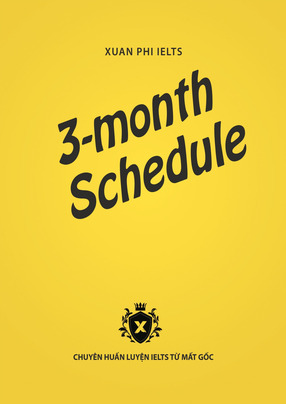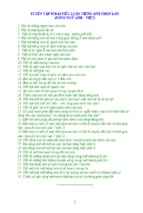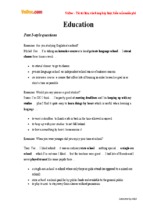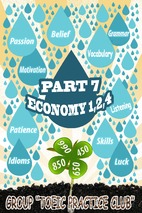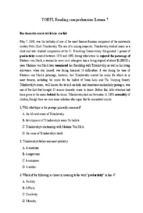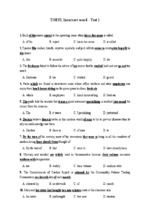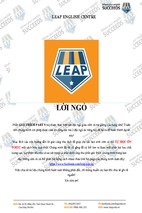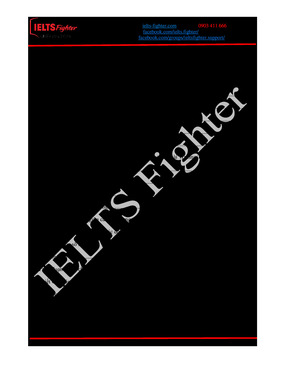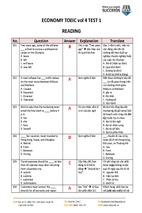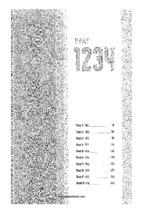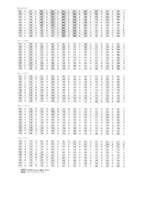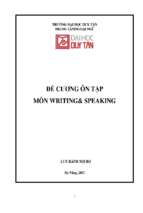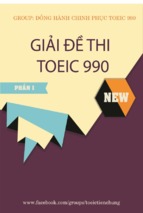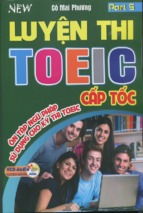Preface vii
Getting Started
1
© 2010 Pearson Education, Inc.
Parts of Speech 1
Using the Dictionary 2
Completing A nalogies 4
Benefits of Flash Cards 6
Word W ise Features 6
8
1
U.S. History: Challenges Faced
2
3
4
5
Composition: The Midterm
Word Parts I 32
6
Review: Focus on Chapters 1 -5
7
Sociology: The Importance of Hello
8
Music: Changing Sounds
14
20
Mathematics: Work It Out
Biology: A Walk in the Woods
26
38
44
50
9
10
Foreign Languages: Welcome Additions
11
Word Parts II 68
12
13
14
Review: Focus on Chapters 7-11
World History: Mongolia Explored
15
Film: Well Worth Watching
16
17
Anthropology: Societies and Customs
Geography: The Frozen Continent
Speech: Tips for Any Occasion
Word Parts III
56
62
74
80
86
92
98
104
v
18
19
Review: Focus on Chapters 13-17
20
Literature: Look Deeply
21
22
23
24
25
26
27
28
Computer Science: Concerns to Consider
Political Science: Searching for the Ideal
Geology: Above and Below
128
134
Review: Focus on Chapters 19-22
140
Education: What's Your Personality?
146
Art History: Always Something New
152
Business: Shopping Made Easier
158
Chemistry: From Ancient to Modern Times
Review: Focus on Chapters 2 4 —27
Contents
116
122
Glossary 176
Create Your Own Flash Cards 180
Pronunciation Key: Inside Front Cover
Word List: Inside Back Cover
vi
110
170
164
Preface
Because students benefit greatly from increased word power, the study of vocabulary should be
enjoyable. Unfortunately, vocabulary workbooks often lose sight of this goal. To make the study
of vocabulary an exciting and enjoyable part of college study, I wrote Academic Vocabulary.
The goal of this book— the third in a three-book interactive vocabulary series— is to make
the study of vocabulary fun through a variety of thematic readings, self-tests, and interactive
exercises. As a casual glimpse through the book will indicate, these activities involve writing,
personal experience, art, and many other formats. The goal of these activities is simple: to utilize
individual learning styles in order to help students learn new words in a large number of contexts.
Underlying the text’s strong visual appeal is the philosophy that an essential part of learning
vocabulary is repeated exposure to a word. Academic Vocabulary provides eight exposures to
each vocabulary word in the text plus more opportunities for exposure through the Collaborative
Activities and games in the Instructor’s Manual.
Content Overview
2010 Pearson Education, Inc.
Academ ic Vocabulary is an ideal text for both classroom and self-study. The twenty main
chapters follow a consistent format.
• Thematic Reading: Because most vocabulary is acquired through reading, each chapter—
with the exception of the Word Parts and Review Chapters— begins with a thematic reading
that introduces ten vocabulary words in context. These readings come in a variety of for
mats, from worksheets to essays. The goal is to show that new words may be encountered
anywhere. Rather than simply presenting a word list with definitions, students have the op
portunity to discover the meanings of these new words via context clues.
The themes for Academic Vocabulary were chosen from disciplines that most students
will encounter at some point in their college careers. In choosing the words, I’ve been guided
by five factors: (1) relation to the chapter theme; (2) use in textbooks, novels, magazines, and
newspapers; (3) occurrence in standardized tests such as the SAT and GRE; (4) containing
word parts introduced in the text; and (5) my own experiences in teaching reading and writing.
• Predicting: The second page of each chapter contains a Predicting activity that gives students
the chance to figure out the meaning of each vocabulary word before looking at its definition.
The Predicting section helps students learn the value of context clues in determining a word’s
meaning. While the text does offer information on dictionary use, I strongly advocate the use
of context clues as one of the most active methods of vocabulary development.
• Self-Tests: Following the Predicting activity are three Self-Tests in various formats. With
these tests, students can monitor their comprehension. The tests include text and sentence
completion, true/false situations, matching, and analogies. Some tests employ context clue
strategies such as synonyms and antonyms and general meaning. Critical thinking skills are
an important part of each test. (Answers to the Self-Tests appear in the Instructor’s Manual.)
• Word Wise: Following the Self-Tests is the Word Wise section that teaches a variety of skills
that are helpful to vocabulary acquisition. There are seven types of activities: Internet Activities,
A Different Approach, Context Clue Mini-Lessons, Interesting Etymologies, Collocations,
Word Pairs, and Connotations and Denotations. Each activity is explained in the Getting
Started section. These activities give students additional practice and insight into the words they
are learning.
v ii
• Interactive Exercise: Next is an Interactive Exercise that may include writing, making
lists, or answering questions. The Interactive Exercises give students the chance to really
think about the meanings of the words, but, more importantly, they encourage students to
begin using the words actively. Some instructors have their students do the Interactive
Exercise in small groups (or pairs) and then have the groups share their responses with the
whole class. (See the Instructor’s Manual for more collaborative activities.)
• Hint, Word Part Reminder, or Conversation Starters: Each chapter includes a Hint, a Word
Part Reminder, or Conversation Starters. The Hints cover tips for developing vocabulary, read
ing, or study skills; they are brief and practical, and students will be able to make use of them in
all of their college courses. The Word Part Reminders are short exercises that give students a
chance to practice using a few of the word parts they have recently learned. The Conversation
Starters are questions that ask students to use the words while speaking with each other. The goal
of the Conversation Starters is to get students to use the words in daily life.
• Word List: The last page in a chapter contains a list of the vocabulary words with a
pronunciation guide, the part of speech, and a brief definition. I wrote these definitions with
the idea of keeping them simple and nontechnical. Some vocabulary texts provide compli
cated dictionary definitions that include words students do not know; I’ve tried to make the
definitions as friendly and as useful as possible.
• Words to Watch: The final activity asks students to pick three to five words they may be hav
ing trouble with and to write their own sentences using the words. This section is an additional
chance for students to grasp the meaning of a few words that may be difficult for them.
Additional Features
In addition to the thematic vocabulary chapters, Academic Vocabulary includes the following sec
tions to assist students in learning new vocabulary.
• Getting Started: The text begins with an introductory chapter to familiarize students with
some of the tools of vocabulary acquisition. The “Parts of Speech” section gives sample words
and sentences for the eight parts of speech. “Using the Dictionary” dissects a sample dictionary
entry and provides an exercise for using guide words. “Completing Analogies” explains how
analogies work, provides sample analogies, and gives students analogy exercises to complete.
This section will prepare students for the analogy Self-Tests contained in several chapters of the
text. The “Benefits of Flash Cards” section explains the advantages of using flash cards and en
courages students to make flash cards beginning with Chapter 1. The “Word Wise Features”
section provides background information for the various Word Wise activities.
• Word Parts: The three Word Parts chapters introduce prefixes, roots, and suffixes used
throughout the book. Students learn the meanings of these forms, and sample words illus
trate the forms. Self-Tests in each Word Parts chapter give students the opportunity to prac
tice using the word parts.
• Review Chapters: Five Review Chapters focus on the preceding four chapters. They divide
the words into different activity groups and test students’ cumulative knowledge. The words
appear in artistic, test, written, puzzle, and collaborative formats. These repeated and varied
exposures increase the likelihood that students will remember the words, not just for one
chapter or test, but for life.
• Glossary: The Glossary is new to this edition. It lists all the vocabulary words along with
the part of speech and the definitions given in each chapter. Students may find it handy to
refer to the Glossary when reviewing words from several chapters.
• Create Your Own Flash Cards: The “Create Your Own Flash Cards” section teaches
students how to make and use flash cards. Students can use the cards for self-study.
Additionally, instructors can use them for the supplemental activities and games found in the
Instructor’s Manual.
v iii
Pr e f a c e
• Pronunciation Key: On the inside front cover is a pronunciation key to help students un
derstand the pronunciation symbols used in this text. The inside front cover also offers some
additional guidelines on pronunciation issues.
• Word List: The inside back cover features a list of all the vocabulary words and the page
numbers on which the definitions are given. A list of the word parts from the Word Parts
chapters is also included on the inside back cover with page references.
Features New to this Edition
This fourth edition has several new features in response to instructor comments.
• Refined Chapter Organization: The chapters have been rearranged to start with what can
be considered core classes: social science (U. S. history), composition, mathematics, and
physical science (biology). The rest of the text contains more social science, arts and
humanities, and physical science courses, as well as chapters covering courses found in
business, technology, and education departments. This organizational method is designed to
address the needs of most students at the start of the text, and then to keep student interest
high by presenting a variety of disciplines in each section.
• Refined In-Chapter Organization: All of the analogy Self-Tests have been moved to the
third exercise in a chapter to allow students more time to work with the vocabulary words
before encountering this challenging activity.
• Added Content: Two additional Review Chapters have been added to help students rein
force and more quickly assess their learning of the words. Word Part Reminders and
Conversation Starters have been interspersed with the Hints as additional ways to help
students remember the word parts and vocabulary words. A Glossary has been added to aid
instructors and students in quickly finding a definition they want to review.
• New Readings: About a third of the chapters have new readings in either topics or formats
more likely to appeal to students. Some of the chapters have also been lengthened to give
students more reading practice and to increase a student’s cultural literacy about a topic.
Additionally, new words have been added to some chapters.
• Updated Design: New photographs have been added to several chapters to make the text
more visually friendly. The artwork has been redone in some chapters for a more sophisti
cated look. And the layout of the text has been redesigned for simplicity and freshness.
• New Web Site: The CD-ROM that formerly accompanied Academic Vocabulary has been trans
ferred to the Internet to allow for easier student access and timelier updating of the exercises.
The Teaching and Learning Package
2010 Pearson Education, Inc.
Each component of the teaching and learning package for Academic Vocabulary has been care
fully crafted to maximize the main text’s value.
• Instructor’s Manual and Test Bank (ISBN: 0-205-63326-9): The Instructor’s Manual and
Test Bank includes options for additional Collaborative Activities and games. The collabo
rative section explains ways students can share their work on the Interactive Exercises in
pairs, in small groups, or with the whole class. Ideas for other collaborative activities using
different learning styles are also offered. The games section presents games that can be used
with individual chapters or for review of several chapters. The games include both individ
ual and full-class activities. The Collaborative Activities and games give students the oppor
tunity to use the words in conversational settings and a chance to work with others.
The Test Bank, formatted for easy copying, includes two tests for each chapter and
combined tests of two chapters. Mastery Tests accompany the Review Chapters and fullbook Mastery Tests can be used as final exams.
• Academic Vocabulary Web Site: Available with this text is access to the Academic Vocabulary
Web site, which features additional exercises and tests that provide for more interaction
between the students and the words. The Web site has an audio component that allows students
Preface
ix
to hear each chapter’s thematic reading and the pronunciation of each word as often as they
choose. Students are often reluctant to use the new words they learn because they aren’t sure
how to pronounce them. The pronunciation guides in each chapter do help to address this fear,
but actually hearing the words spoken will give students greater confidence in using the words.
To learn how to access the Web site, contact your Pearson publishing representative.
For Additional Reading and Reference
The Longman Basic Skills Package
In addition to the book-specific supplements discussed above, other skills-based supplements are
available. These supplements are available either at no additional cost or at greatly reduced prices.
• The Dictionary Deal. Two dictionaries can be shrink-wrapped with Academic Vocabulary
at a nominal fee. The New American Webster Handy College Dictionary is a paperback ref
erence text with more than 100,000 entries. Merriam-Webster’s Collegiate Dictionary,
Eleventh Edition, is a hardback reference with a citation file of more than 14.5 million ex
amples of English words drawn from actual use. For more information, please contact your
Pearson publishing representative.
• Longman Vocabulary Web Site. For additional vocabulary-related resources, visit our free
vocabulary Web site at http://www.ablongman.com/vocabulary.
• MyReadingLab (www.myreadinglab.com). MyReadingLab is the first and only online
learning system to diagnose both students’ reading skills and reading levels. This remark
able program utilizes diagnostic testing, personalized practice, and gradebook reports to
allow instructors to measure student performance and help students gain control over
their reading.
Acknowledgments
I want to thank the following reviewers for their helpful suggestions for this fourth edition: Cecelia
Guinee, Portland Community College; Kimberly Smith, Miami Dade College-Homestead Campus;
Cynthia Graham, Pueblo Community College; Carol Homer, John Tyler Community College;
Marianne Friedell, College of the Mainland; Nancy Banks, Florida Community College of
Jacksonville; Judy Johnson, John Tyler Community College; and Keming Liu, Medgar Evers
College/CUNY.
Additionally, I am grateful to Kate Edwards, Acquisitions Editor of Reading and Study Skills at
Pearson Longman for her help in preparing this edition. Commendations go to Pearson’s Supplement
and Marketing departments for their assistance and to Elm Street Publishing Services for making this
series visually appealing. A big thank you to Martha Beyerlein for her work during the production
phase. To Elizabeth, Tina, and Margaret, as well as other colleagues, I offer my gratitude for stimu
lating discussions on education at various gatherings. I deeply appreciate my family’s support, and I
give warm thanks to my husband for being such a good guy.
I am proud to present the fourth edition of Academic Vocabulary, a book that makes learn
ing vocabulary enjoyable and meaningful.
— A my E. O lsen
A lso A v a ila b le
Books 1 and 2 of the Vocabulary Series:
Interactive Vocabulary: General Words, by Amy E. Olsen
Active Vocabulary: General and Academic Words, by Amy E. Olsen
X
Preface
Getting Started
Parts of Speech
There are eight parts of speech. A word’s part of speech is based on how the word is used in a
sentence. Words can, therefore, be more than one part of speech. For an example, note how the word
punch is used below.
nouns: (n.) name a person, place, or thing
E xamples: M s. Lopez, New Orleans, lamp, warmth
Ms. Lopez enjoyed her trip to New Orleans where she bought a beautiful lamp. The warmth of
the sun filled Claire with happiness. I drank five cups of the orange punch.
pronouns: (pron.) take the place of a noun
E xamples: I, me, you, she, he, it, her, we, they, my, which, that, anybody, everybody
Everybody liked the music at the party. It was the kind that made people want to dance. They
bought a new car, which hurt their bank account.
verbs: (v.) express an action or state of being
E xamples: enjoy, run, think, read, dance, am, is, are, was, were
Lily read an interesting book yesterday. I am tired. He is an excellent student. She punched the
bully.
adjectives: (adj.) modify (describe or explain) a noun or pronoun
E xamples: pretty, old, two, expensive, red, small
The old car was covered with red paint on one side. The two women met for lunch at an
expensive restaurant. The punch bowl was empty soon after Uncle A1 got to the party.
adverbs: (adv.) modify a verb, an adjective, or another adverb
E xamples: very, shortly, first, too, soon, quickly, finally, furthermore, however
We will meet shortly after one o ’clock. The very pretty dress sold quickly. I liked her; however,
there was something strange about her.
©2010
Pearson Education, Inc.
prepositions: (prep.) are placed before a noun or pronoun to create a phrase that relates to other parts
of the sentence
E xamples: after, around, at, before, by, from, in, into, of, off, on, through, to, up, with
He told me to be at his house in the afternoon. You must go through all the steps to do the job.
conjunctions: (conj.) join words or other sentence elements and show a relationship between the
connected items
E xamples: and, but, or, nor, for, so, yet, after, although, because, if, since, than, when
I went to the movies, and I went to dinner on Tuesday. I will not go to the party this weekend
because I have to study. I don’t want to hear your reasons or excuses.
interjections: (interj.) show surprise or emotion
E xamples: oh, hey, wow, ah, ouch
Oh, I forgot to do my homework! Wow, I got an A on the test!
1
Using the Dictionary
There will be times when you need to use a dictionary for one of its many features; becoming familiar
with dictionary entries will make using a dictionary more enjoyable. The words in a dictionary are
arranged alphabetically. The words on a given page are signaled by guide words at the top of the
page. If the word you are looking for comes alphabetically between these two words, then your word
is on that page. When using online dictionaries, you will simply type in the word you are looking for,
so guide words will not be important, but the other features of an entry remain the same.
wing tip* wintry
1436
► wing tip n (ca. 1908) 1a : the edge or outer
margin of a bird’s wing b usu wingtip : the
outer end of an airplane wing 2 : a toe cap
having a point that extends back toward the
throat of the shoe and curving sides that extend
toward the shank 3 : a shoe having a wing tip
Entry “ ► 1winkVwir]k\ vb [ME, fr. OE wincian; akin to
OHG winchan to stagger, wink and perh. to L
vacillare to sway, Skt vancati he goes
crookedly] vi (bef. 12c) 1 : to shut one eye
briefly as a signal or in teasing 2: to close and
open the eyelids quickly 3: to avoid seeing or
noting something — usu. used with at 4 : to
gleam or flash intermittently: t w i n k l e
2 a : a hint or sign given by
winking b : an act of winking 3 : the time of a
wink: i n s t a n t 4 : a flicker of
the eyelids: b l i n k
win-teMze Vwin-t3-,nz\ vt -ized; -iz-ing (1934):
to make ready for winter or winter use and
esp. resistant or proof against winter weather
<~ a car> — win»ter*i*za*tion \,win-te-r9-'zashsn\ n
win*ter— kill \'win-ter-,kil\ vt (ca. 1806): to kill
(as a plant) by exposure to winter conditions ~
vi : to die as a result of exposure to winter
conditions — winterkill n
win«ter*ly Vwin-t3r-le\ adj (1559): of, relating
to, or occurring in winter : w i n t r y
winter melon n (ca. 1900) 1 : any of several
muskmelons (as a casaba or honeydew melon)
that are fruits of a cultivated vine (Cucumis
melo indorus) 2: a large white-fleshed melon
that is the fruit of an Asian vine (Benincasa
hispida) and is used esp. in Chinese cooking
winter quarters n pi but sing or pi in constr
(1641): a winter residence or station (as of a
military unit or a circus)
winter savory n (1597): a perennial European
mint (Satureja montana) with leaves used for
seasoning — compare s u m m e r s a v o r y
winter squash n (1775) : any of various hardshelled squashes that belong to cultivars
Guide
words
SOURCE: By permission. From Merriam-Webster's Collegiate* Dictionary, Eleventh Edition © 2008 by Merriam-Webster, Incorporated
(www.Merriam-Webster.com).
Using Guide Words
Use the sample guide words to determine on which page each of the eight words will be found. W rite
the page number next to the entry word.
Page
G uide W o rd s
1•pang
157
159
bone/boo
2. Panama
654
655
975
humanist/humongous
humor/hunter
pamphlet/pandemonium
976
pander/pant
E xample:
2
boot/bom
humdinger
Ge t t i n g St a r t e d
3. bonnet
4. hummus
—
5. border
-----
6. hunk
--------
7. booth
--------
8. pansy
Most dictionaries contain the following information in an entry:
» The pronunciation— symbols that show how a word should be spoken, including how the word
is divided into syllables and where the stress should be placed on a word. The Pronunciation
Key for this book is located on the inside front cover. The key shows the symbols used to indi
cate the sound of a word. Every dictionary has a pronunciation method, and a pronunciation key
or guide is usually found in the front pages, with a partial key at the bottom of each page. The
differences in the pronunciation systems used by dictionaries are usually slight.
►The part of speech—usually abbreviated, such as n. for noun, v. for verb, and adj. for adjective.
A key to these abbreviations and others is usually found in the front of the dictionary.
►The definition— usually the most common meaning is listed first followed by other meanings.
» An example of the word in a sentence— the sentence is usually in italics and follows each meaning.
» Synonyms and antonyms—synonyms are words with similar meanings, and antonyms are
words with opposite meanings. (You should also consider owning a thesaurus, a book that lists
synonyms and antonyms.)
> The etymology— the history of a word, usually including the language(s) it came from.
> The spelling of different forms of the word— these forms may include unusual plurals and verb
tenses (especially irregular forms).
Entry
word
♦.
Part of
Pronunciation speech
♦
i
Spelling of
different forms
f
Most common
definition
}
СОП-firm ( кэп f u r m '), v., confirmed, -firming, -firms.
♦
1. to establish the
truth or accuracy of; to verify: The man called the company to confirm the
Used in a
sentence
safe arrival o f the package. 2. to add strength to: To confirm her lead in the
race, the woman ran faster. 3. to make binding by a formal or legal act; to
ratify: We were able to confirm the sale at yesterday's meeting, [from
Additional
definitions
and sentences
Latin: confirmare to strengthen] — con*firm'a«ble. adj. — con*firm'er, n.
—Syn. prove; affirm.
t
Synonyms
i
Etymology
Spelling of
different forms
Despite the popularity of online dictionaries, it can still be handy to own a paper version. When
choosing a dictionary, take the time to look at different dictionaries to see what appeals to you.
Dictionaries come in several sizes and are made for different purposes. First read some of the entries to
see if the definitions make sense to you. See which of the features above are used in the dictionary. Is it
important to you to be able to study the etymology of a word? Would you like sample sentences? Some
dictionaries have illustrations in the margins. Decide if that is a feature you would use. Check to see if
the print is large enough for you to read easily.
Decide on how you will use this dictionary. Do you want a paperback dictionary to put in your back
pack? Or is this going to be the dictionary for your desk and a large hardback version would be the better
choice? Several disciplines have specialized dictionaries with meanings that apply to those fields such as
law or medicine. There are also bilingual dictionaries, such as French/English or Spanish/English, that can
be helpful for school or travel. Take time in picking out your dictionary because a good dictionary will be a
companion for years to come. A few dictionaries to consider are Merriam-Webster's Collegiate Dictionary,
The American Heritage Dictionary, The Random House College Dictionary, and The Oxford Dictionary.
In general, when you are reading, try to use context clues, the words around the word you don’t
know, to first figure out the meaning of a word, but if you are still in doubt, don’t hesitate to refer to a
dictionary for the exact definition. Don’t forget that dictionaries also contain more than definitions
and are an essential reference source for any student.
Ge t t i ng S t a r t e d
3
Completing Analogies
An analogy shows a relationship between words. Working with analogies helps one to see
connections between items, which is a crucial critical thinking skill. Analogies are written as follows:
big : large :: f a s t: quick. The colon (:) means is to. The analogy reads big is to large as fast is to
quick. To complete analogies there are two steps to follow:
1. find a relationship between the first pair of words
2. look for a similar relationship in another set of words
In the example above, big and large have similar meanings; they are synonyms. Fast and quick also
have similar meanings, so the relationship between the four words uses synonyms.
Common relationships used in analogies (with examples) include
synonyms (trip : journey)
grammatical structure (shaking : shivering)
antonyms (re a l: fake)
cause and effect (step in a puddle : get wet)
examples (strawberry : fruit)
sequences (turn on car : drive)
part to a whole (handle : cup)
an object to a user or its use (spatula : chef)
Analogies in this book come in matching and fill-in-the-blank forms. Try the following
analogies for practice.
Matching
1. o ld : y o u n g ::
_____
a. p reface: book
2. clip coupons : go shopping ::
_____
b. put on shoes : take a walk
3. p e e l: banana ::
_____
c. low wages : strike
4. no rain : drou g h t::
_____
d. rested : tired
Fill-in-the-Blank imiimiimmmHfmiimmmmmiimmimmimmmiiiimimmiimmmmmmimimm
writer
passion
5. frozen : chilled :: kidnap : _____
6. interrupting : rude :: embracing :
7. slow : slowly :: sad : __________
8. baton : conductor :: computer : _
4
Ge t t i n g St a r t e d
abduct
sadly
Answers
1. To figure out this analogy, first one needs to see that old and young are opposites, or antonyms.
Next look at the choices and see if another pair of words are antonyms, and, yes, rested and tired
are opposites. The answer is d.
2. A person would clip coupons and then go shopping, so there is a sequence of events. Of the
choices, one would put on shoes and then take a walk, another sequence. The answer is b.
3. A peel is a part of a banana, while a preface is part of a book, so the connection is part to a
whole. The answer is a.
4. When an area gets no rain, it can lead to a drought, and when people get paid low wages, they
can go on strike. The connection among these pairs is cause and effect. The answer is c.
5. Frozen and chilled have similar meanings; they are synonyms. To solve the analogy, pick a word
that has a similar meaning to kidnap, which would be abduct.
6. Interrupting a person is an example of a rude behavior. Embracing is an example of another type
of behavior; in this case, it fits as an example of passion.
7. Slow is an adjective, and slowly an adverb; sad is an adjective, and sadly an adverb. This analogy
works by using the same grammatical structure between the words.
8. A baton is used by a conductor. Who uses a computer? Among the choices, writer obviously fits.
The relationship here is object to user.
Sometimes you may come up with a relationship between the first two words that makes sense
but doesn’t fit any of the choices. Look at the choices and the two words again to see if you can find a
way any four words fit together. Also do any obvious matches first, and with fewer choices it will be
easier to spot the harder connections. Doing analogies can be fun as you begin to make clever connec
tions and see word relationships in new ways. Finding word connections will help your brain make
other connections in areas as diverse as writing essays, doing math problems, and arranging travel
plans. Analogies are just another way to exercise your thinking skills.
Try a few more analogies, and check your answers on page 12 to see how you did.
Matching
1. b u tto n : s h irt::
_____
a. b ro o m : janitor
2. map : traveler ::
_____
b. drawer : desk
3. calm : tran q u il::
_____
c. stayed up late : exhausted
4. watched a comedy : laughed :: _____
d. wise : smart
Fill-in-the-Blank
huge
I i 1111II11111II f11(i S! 111i 1111111111111111111111! 11i (111i 111111111111111111II i 111f I i 11111!! 111111i 1111II111111111
beverage
warmth
sleep
5. make dinner : e a t :: put on pajamas : ________________
6. dull : b rig h t:: tiny : ________________
7. trunk : storage :: c o a t: ________________
8. the Nile : a river :: iced tea : _______________
Ge t t i ng St a r t e d
5
Benefits of Flash Cards
There are several benefits to using flash cards to help you study vocabulary words.
Making the Cards The first benefit comes from just making the cards. When you make a card,
you will practice writing the word and its definition. You may also write a sentence using the word,
record its part of speech, or draw a picture of the word. See the section “Create Your Own Flash
Cards” on page 180 at the back of this book for ideas on how to make flash cards. Creating the cards
allows for a personal experience with the words, which makes learning the words easier.
Working with Others
Another benefit is that using the cards can lead to collaborative activities.
When you ask a friend, family member, or classmate to quiz you on the words, you get the chance to
work with someone else, which many people enjoy. You may even establish a study group with the
friends you find from quizzing each other on your flash cards.
Evaluating Your Learning
A third benefit is that the cards serve as pre-tests that let you evalu
ate how well you know a word. When a friend quizzes you, ask him or her to go over the words you
miss several times. As the stack of flash cards with words you don’t know gets smaller, you know that
the words are becoming part of your vocabulary. You know that you are prepared to face a word on a
quiz or test when you can correctly give the definition several times.
Making and using the flash cards should be fun. Enjoy the process of learning new words. Turn to the
back of the book now to review the directions for creating flash cards, and you will be ready to make
cards beginning with Chapter 1.
Word Wise Features
The Word Wise boxes share information on different areas related to vocabulary. There are seven
types of features.
Internet Activity
suggests ways to use technology to enhance your learning experience.
A Different Approach
presents activities that you can do alone or collaboratively that allow you to
interact with the vocabulary words using diverse methods, such as art, creative writing, and word groups.
These other techniques can help to stimulate your mind and organize the vocabulary you are learning.
Context Clue Mini-Lessons provide different types of context clue situations and give you the
opportunity to practice using each type. Context means the words surrounding a specific word that
give clues to that word’s meaning. When you encounter a word whose meaning you don’t know, keep
reading the passage, looking for clues to help you figure out the meaning. These clues might be in the
same sentence as the unknown words or in a sentence that comes before or after the word. Look for
these types of clues in a passage:
Synonyms— words that have a similar meaning to the unknown word
Antonyms— words that mean the opposite of the unknown word
Examples— a list of items that explain the unknown word
General meaning— the meaning of the sentence or passage as a whole that could clarify the
meaning of the unknown word
Each type of context clue has a mini-lesson, and a final lesson combines the methods. You will not
find a context clue every time you encounter a word you don’t know, but being aware of context clues
will help you determine the meaning of many new words and make reading more enjoyable.
6
Ge t t i n g St a r t e d
Interesting Etymologies
presents notable word histories. Some of the histories use the word
parts presented in the three Word Parts chapters of the text. Learning the history of a word can help
you to remember its meaning.
Collocations
show ways words are used together. The groupings can come in several forms, such
as a verb with a noun (
- Xem thêm -

